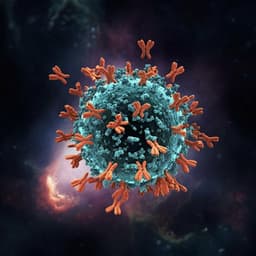
Medicine and Health
Immunogenicity and efficacy of vaccine boosters against SARS-CoV-2 Omicron subvariant BA.5 in male Syrian hamsters
R. R. G. Machado, J. L. Walker, et al.
This study reveals the impressive neutralizing antibody responses and efficacy against the BA.5 challenge in male Syrian hamsters following vaccination with Ad26.COV2.S or BNT162b2, showcasing that a single high dose of Ad26.COV2.S outperforms two doses of BNT162b2. The NVX-CoV2373 booster emerged as the champion in providing robust immunity. Conducted by renowned authors from the University of Texas Medical Branch, this research highlights the potential of various vaccine regimens in combatting BA.5 infection.
~3 min • Beginner • English
Related Publications
Explore these studies to deepen your understanding of the subject.







